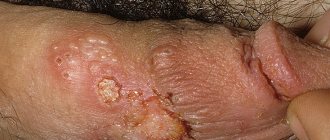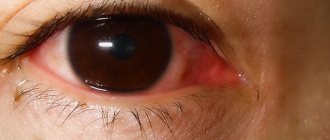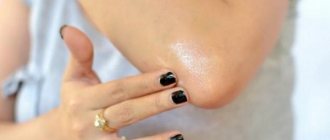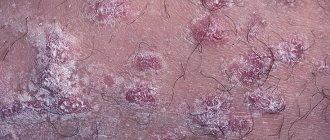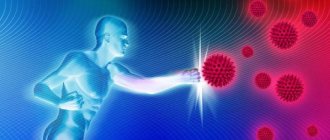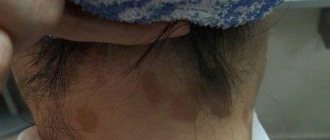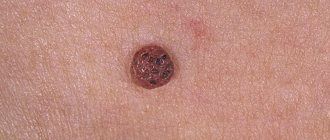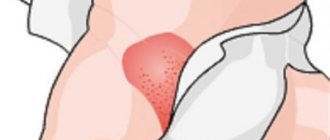Let's talk about how to delicately care for oily and problematic skin.
Skin is the body's protective barrier. To maintain it, the sebaceous glands produce sebum - one of the building materials of the hydrolipid film. If this process is disrupted, the skin becomes oily and can cause breakouts. 74% of European women face similar problems.
Acne is a chronic inflammatory skin disease accompanied by a significant amount of sebaceous glands, clogged pores and inflammation. Not only teenagers, but also adults face it. And treatment can last for years.
However, if you adhere to a healthy lifestyle, do not try to cure acne yourself, but seek help from specialists and choose the right care, you can significantly ease the course of the disease and maintain healthy skin.
Nutrition
Any factors leading to problems with the gastrointestinal tract negatively affect the condition of the skin: complexion changes, comedones and inflammation appear. These are the consequences of a lack or imbalance of proteins, fats, carbohydrates, as well as vitamins, minerals and trace elements.
A properly selected balanced diet contains sufficient amounts of proteins, fats, carbohydrates and vitamins. If necessary, you can use nutritional supplements, but only in consultation with your doctor.
In addition, salt, sugar and its substitutes, refined fats and modified starch should be avoided in the diet. Mayonnaise, various sauces, chips, sweets, sausages and smoked meats are especially harmful to the stomach and skin. Sugary carbonated drinks not only disrupt the functioning of the digestive glands, but also remove minerals and vitamins from the body.
Life style
Source here and below: Pexels
Under certain conditions, the condition of the skin can either improve or worsen. Changing your daily rituals accordingly to healthier habits will energize your body and improve the overall appearance of your skin.
Factors that negatively affect the skin
- cosmetics containing alkalis, aggressive substances, mineral or vegetable oil, alcohol;
- some medications: corticosteroids, some contraceptives, anabolic steroids, antidepressants, some antiepileptic drugs, anti-tuberculosis drugs, cyclosporine, long-term use of vitamins B6, B12;
- stress and depression, which lead to excess production of the hormone prolactin, increasing inflammation in the body;
- disruption of the sleep cycle or insufficient amount of sleep, leading to disruption of hormones;
- prolonged mechanical impact on the skin: wearing caps, hats, tight bandages;
- excess ultraviolet radiation, which compacts the top layer and causes inflammation deep in the skin;
- alcohol abuse and smoking;
- low level of physical activity.
At the cosmetologist's
If your skin is prone to imperfections, you should avoid chemical peels, as well as frequent manual and ultrasonic cleansing. These procedures are quite aggressive and traumatic for the skin, so they can only increase inflammation. A more gentle and effective solution to the problem is a chemical revitalization system. Its preparations contain a transport complex that delivers acids and other components into the skin without injuring it. The renewal process is carried out gradually, from the inside out, dosing the release of active substances. Therefore, the risk of complications in the form of inflammation and peeling is leveled.
A specialist will help you determine the required combination of drugs and methodology in a prescription program for chemical skin renewal.
Main varieties
Each disease has its own cause of occurrence and form of progression. Below are the most common types of skin diseases, photos with the names of the diseases.
Despite the fact that most pathologies have similar symptoms, each disease requires an individual approach to therapy.
All skin diseases that directly affect the skin of the face are usually divided into groups related to:
- pustular infections resulting from exposure to pyogenic bacteria (streptococci, staphylococci and others);
- fungal diseases caused by pathogenic fungi;
- viral infections.
- acne (acne). Symptoms can range from small rashes to large comedones. Such changes are often associated with hormonal surges in the body of adolescents. Possible consequences in the form of scars.
- Folliculitis - red nodules bordered by a light rim.
- Furunculosis, represented by painful cavities filled with pus. Accompanied by high fever and facial swelling. Can lead to complications such as meningitis and sepsis.
- Impetigo: small blisters that later develop into painful ulcers with pus-filled crusts.
- dermatomycosis, in which peeling of the skin, diaper rash, and blisters are noted. Possible negative effects on the immune system and allergies.
- Pityriasis versicolor: characterized by scaly patches of yellow or brown color. Often becomes chronic.
- Actinomycosis, the main manifestation of which is round subcutaneous seals of a bluish-purple color with the formation of fistulas. The disease is dangerous due to complications in the form of tissue necrosis, deep ulcers, and diseases of internal organs.
- Ringworm: It appears as round patches with scales and swelling. May progress to a chronic, incurable stage.
- Erythrasma: the appearance of spots of different colors and shapes with a clearly defined pattern. Sometimes it goes into a chronic stage.
- Herpes is a disease of the facial skin in which small, painful blisters appear on it. Herpes is also dangerous for the skin of other parts of the body, especially for the skin and mucous membranes of the genital organs.
- Papillomas in the form of skin growths of different shapes, colors and sizes (condylomas, warts). They spread very quickly throughout the body.
- Molluscum contagiosum is a dense, translucent formation with indentations in the center. May be complicated by severe inflammatory processes.
- for local use;
- for internal use.
All these skin diseases on the face of people create psychological discomfort, develop complexes in a person and interfere with his normal communication with others. Since pain is usually not observed as a result of such skin changes, the reason for visiting a doctor is precisely the aesthetic defect. At the same time, the disease itself, like other ailments, needs treatment. To do this, you must first correctly determine the type of disease that has affected the skin.
Important! Only a doctor can determine the type of disease and prescribe the correct treatment.
Skin lesions on the face can be very different
Pustular diseases (pyoderma)
This type of facial skin disease is the most common. Such infections include:
Inflammatory diseases of the facial skin are characterized by changes in the hair follicles and sebaceous glands
Fungal diseases
Diseases of the skin of the face and body of this type are contagious and can pass from one person to another. The most common of them are:
Attention! Since the types of infections considered are highly contagious, they can be easily “caught” in a bathhouse, sauna, from animals, or from an infected person.
Fungal diseases are caused by parasitic fungi that can affect human skin, hair and nails
Viral diseases (exanthems)
Another type of skin diseases on the face are diseases caused by viral infections:
Thus, dermatological diseases of the facial skin do not allow for a frivolous attitude. They need to be detected in time and treated using modern medical methods and means.
The appearance of papillomas is sometimes a symptom of cancer, so if they form, you should immediately consult a doctor
Treatment of facial skin diseases should begin at the first symptoms of their manifestation. The treatment process itself is conventionally divided into several stages. This may be due to the individual characteristics of each patient and the type of disease. For example, treatment tactics may be determined differently for facial skin diseases in children and for the same diseases in adults.
To treat facial skin, medications of two groups are used:
Proven, effective products are widely used to treat facial skin.
Using Home Recipes
Skin treatment using folk methods is widespread: herbs, vegetable oils, homemade masks. However, not all ailments can be cured with home remedies.
In some cases, for example, in those when the skin of the face signals liver disease, treatment must be taken seriously, based on the achievements of modern medicine.
Drug treatment, supported by folk remedies, can lead to a speedy recovery
There are as many ways to treat inflammation on the face as there are reasons for their appearance, but the correct treatment must be determined by a doctor.
zkozha.ru
Why do you think the facial areas are most often affected?
The skin on our face is capable of sensitively reacting to various unfavorable factors, as well as disruptions in the functioning of the body. Most often, the cause of most ailments is various malfunctions and pathologies in the functioning of internal organs.
Home care
Independent attempts to remove blackheads and inflammatory elements only cause additional trauma to the skin and spread the inflammatory process.
Home care involves four main stages:
1) delicate and thorough cleansing;
2) therapeutic renewal;
3) non-comedogenic moisturizing;
4) UV protection.
Cleansing
You should wash your face twice a day with water at room temperature, using safe and high-quality products that have passed dermatological control. When choosing cosmetics for cleansing, avoid alcohol in the composition. It causes inflammation, enlarges pores and causes an uneven surface of the skin. An ideal product should gently and carefully cleanse without damaging the skin, so pay attention to cosmetics with vitamin C, salicylic and hyaluronic acids.
Toning
The process of cleansing the skin should take place in two stages, and the second of them is toning. Even if you have washed your face thoroughly, a sponge with toner will show traces of dirt, if any remain. Tonic prepares the skin for the application of serum and cream. It allows the active ingredients in moisturizers to work more effectively on the skin.
Hydration
Girls with oily or problematic acne-prone skin are advised to visit a dermatologist who will individually select care products.
Sun protection
It is worth applying products with SPT to your face even in winter. They allow the skin to remain young and elastic longer, and also protect against the formation of unwanted rashes.
Skin fungus: general characteristics
Fungi are widespread and can be found in any country. A person leading an asocial lifestyle may not necessarily be susceptible to a fungal infection; children are often at risk due to contact with various objects surrounding them. As a rule, even minor damage is enough to become infected with fungus.
Signs of a fungal infection of the skin of the hands and feet:
- Changed skin color.
- Change in skin thickness, formation of peeling.
- There is no pain, but severe skin itching is observed.
The fungus cannot disappear without drug treatment; drugs that fight it are needed, both locally and systemically. Maintaining hygiene is also an important point.
So we can say that skin infections as well as soft tissue infections are observed in adults and children. They should not be treated on their own, as this can only aggravate the situation and lead to a disastrous result that no doctor can correct. That is why treatment can only take place under the supervision of specialists in a medical institution, who are fully familiar with the disease and all its symptoms, know the possible complications, using various drugs, such as antibiotics and antiviral and antibacterial agents.
